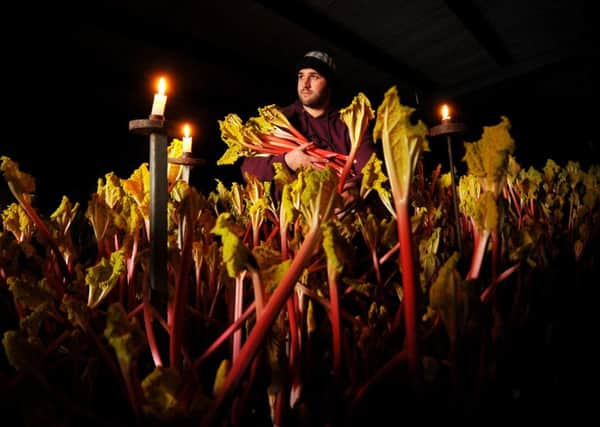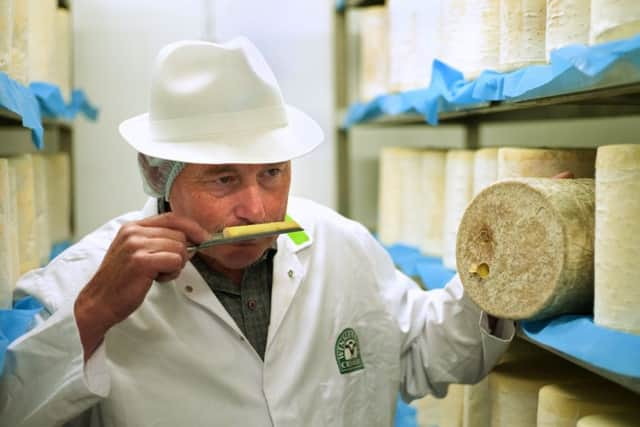Protected food names at mercy of new deal with EU


Yorkshire Wensleydale Cheese and Yorkshire Forced Rhubarb are two of some 61 protected UK products which would stand to lose long-fought-for protection that authenticates their produce as unique within European Union member states.
Applications for another 17 home-produced foods are still being considered as part of a process that takes up to four years to complete and while the Government has guaranteed the protections will last until Britain formally leaves the EU, Ministers have much work to do to extend the protection beyond that point.
Advertisement
Hide AdAdvertisement
Hide AdIn a new report, industry analysts at the Agriculture and Horticulture Development Board (AHDB) have set out what needs to happen if Britain is to keep its protected food names.


Kathy Roussel, head of AHDB’s Brussels office and the report’s co-author, said the Department for Environment, Food and Rural Affairs recognises the benefits of protecting traditional and geographical food products and it has a team looking at how best to protect these products post-Brexit, but warned: “When the UK leaves the EU, registered protected food names should be able to benefit from EU protection against imitation, provided there is a reciprocal agreement between the UK and the EU.
“If the UK wishes to register protected food names post-Brexit with the EU, it would first need to set up its own national approval scheme. Only when products have been approved by a non-EU country’s own national scheme can they be considered for approval under the EU protected food scheme.
“These products would also be protected by countries which have a Free Trade Agreement or bilateral agreement with the EU.”
Advertisement
Hide AdAdvertisement
Hide AdDefra stopped short of guaranteeing the long-term future of protected food names but a spokesperson did say: “These products are extremely important to our reputation as a great food nation and we will work to ensure they continue to benefit from protection in the future.”


Yorkshire Forced Rhubarb was awarded Protected Designation of Origin (PDO) status by the European Commission in 2010 which grower Janet Oldroyd Hulme, of E Oldroyd and Sons in Carlton, Wakefield, said “does an immense amount of good” for both producers and the public.
She said: “It doesn’t matter whether it is Yorkshire Forced Rhubarb or Wensleydale Cheese, the public knows they have the authentic product and not a copy that’s just got the name on.”
The Hawes-based Wensleydale Creamery achieved Protected Geographical Indication (PGI) status for its Yorkshire Wensleydale Cheese in 2013.
Advertisement
Hide AdAdvertisement
Hide AdExplaining the benefits, David Hartley, the Creamery’s managing director, said: “Gaining European Protected Food Name Status in the form of Protected Geographical Indication (PGI) status for our Yorkshire Wensleydale cheese guarantees the quality and authenticity of our Yorkshire Wensleydale and differentiates it from Wensleydale cheese produced in other counties across the UK. This has been particularly advantageous when selling into domestic and international markets and gives us a platform for telling the story of our provenance and authenticity globally.
“We are working closely with the UK Food Protected Names Association and Defra, who intend to put plans in place to continue this protection via a new British law to replace PGI and ensure that any changes continue to promote, protect and reaffirm the heritage, quality and authenticity of Yorkshire Wensleydale.”
PROTECTION EXPLAINED
Three different protections are awarded by the European Union to food products and a label that identifies which protection a food has been awarded is displayed on its packaging.
Of those applicable to Yorkshire’s protected food names, a product protected by PDO status must be produced, processed and prepared in one defined area and have distinct characteristics from that area.
A product protected under PGI status means the product originates from a specific place, is produced, processed or prepared there and is characteristics are attributable to its geographical origin.